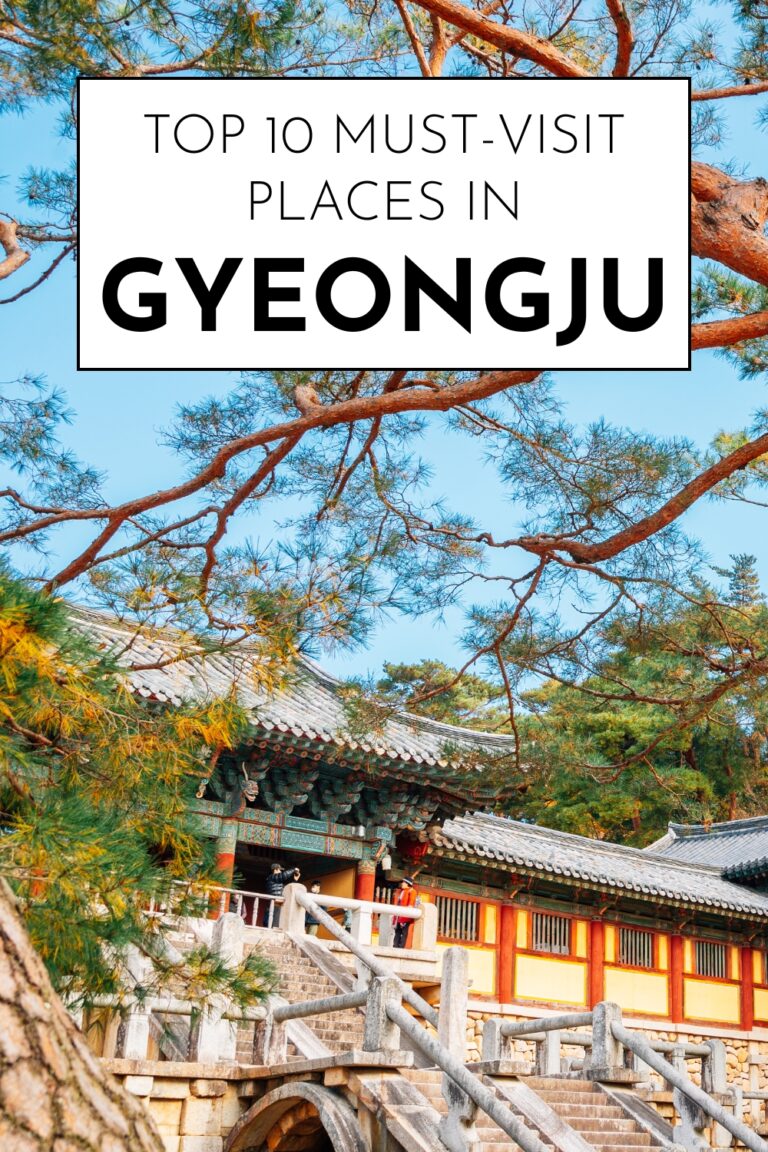Known as “the museum without walls,” Gyeongju stands as one of South Korea’s most treasured destinations and a testament to the country’s rich cultural heritage. This ancient city, located in North Gyeongsang Province, served as the capital of the Silla Kingdom for nearly 1,000 years (57 BC – 935 AD), making it one of the world’s longest-serving ancient capitals.
Gyeongju’s extraordinary historical significance earned it UNESCO World Heritage status, with the entire city designated as a historic area containing thousands of archaeological sites, temples, tombs, and cultural artifacts. Walking through Gyeongju feels like stepping back in time, where ancient burial mounds dot the landscape like gentle hills, and centuries-old temples still echo with the sounds of Buddhist prayers.
What makes Gyeongju truly special is how seamlessly it blends its ancient past with modern life. Traditional hanok houses sit alongside contemporary buildings, while farmers still cultivate rice fields that have been worked for over a millennium. The city offers visitors a rare opportunity to experience Korean history not just through museums and monuments, but through a living landscape where the past remains vibrantly present.
The city’s compact size makes it perfect for exploration, whether by bicycle along tree-lined paths or on foot through historic districts. Cherry blossoms transform the city into a pink wonderland each spring, while autumn brings fiery colors that create stunning backdrops for ancient architecture.
Let’s explore the ten most essential destinations that showcase why Gyeongju is considered the heart of Korean cultural heritage and a must-visit destination for anyone seeking to understand Korea’s fascinating history.
1. Bulguksa Temple – Masterpiece of Buddhist Architecture
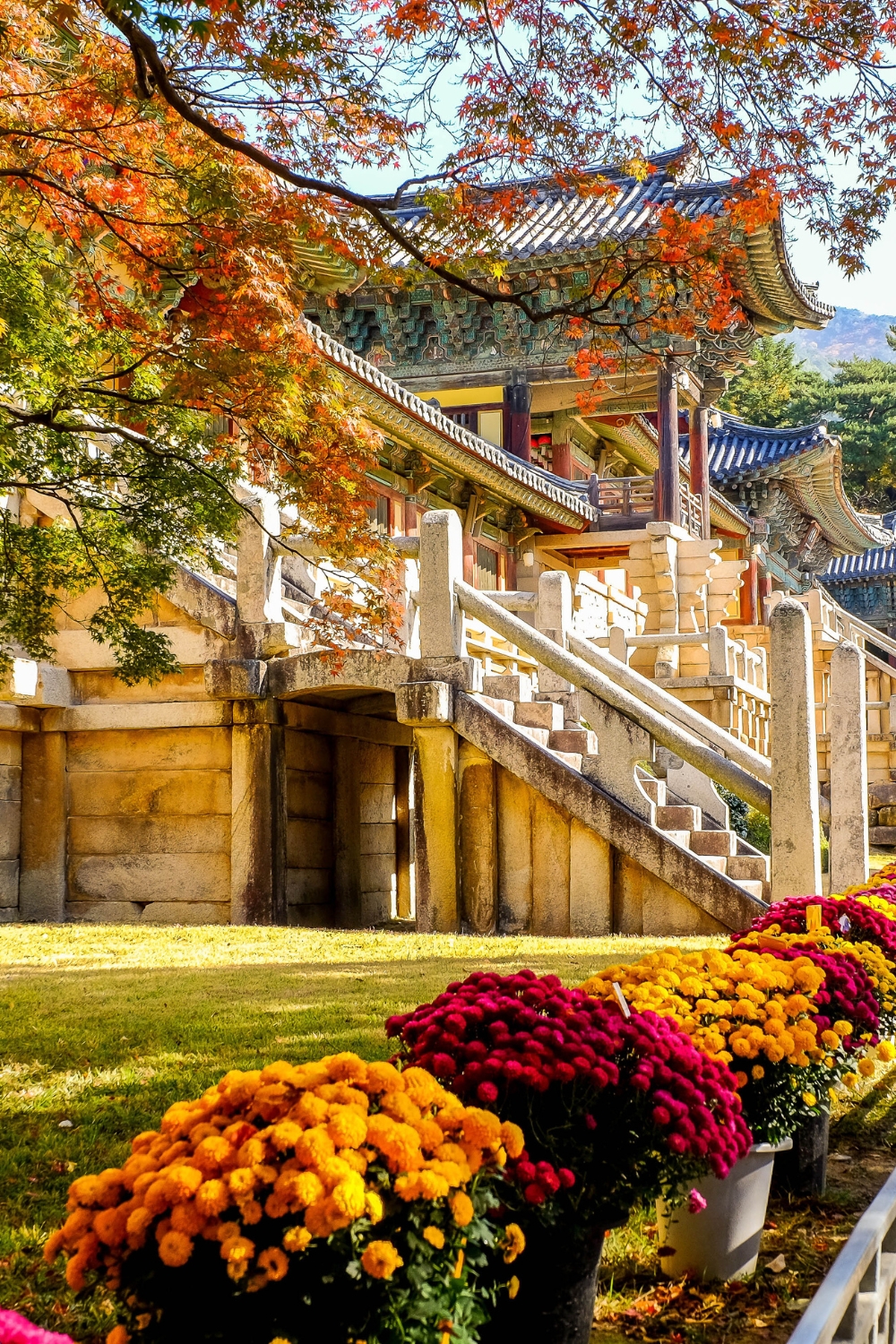
Bulguksa Temple represents the pinnacle of Silla Dynasty Buddhist architecture and stands as one of Korea’s most important religious sites. Built in 528 AD and extensively renovated in 751 AD, this UNESCO World Heritage site demonstrates the sophisticated engineering and artistic achievements of ancient Korean craftsmen.
Architectural Marvel and Cultural Significance
The temple complex showcases the Buddhist concept of paradise on earth through its carefully planned layout and symbolic design elements. Every aspect of the temple, from the stone staircases to the positioning of buildings, represents Buddhist cosmology and the journey toward enlightenment.
The temple’s most famous features include the Dabotap and Seokgatap pagodas, which are considered masterpieces of stone carving. These National Treasures demonstrate the advanced stone-working techniques of Silla artisans and have inspired countless replicas throughout Korea.
Bulguksa’s wooden buildings, rebuilt after destruction during Japanese invasions, maintain their original proportions and design principles. The harmonious integration of natural landscape with architectural elements creates a sense of peace and spiritual contemplation that has attracted pilgrims for over 1,400 years.
Seasonal Beauty and Spiritual Experience
The temple grounds transform throughout the seasons, offering different experiences year-round. Spring brings cherry blossoms that frame the ancient pagodas in pink petals, while autumn creates a tapestry of red and gold leaves against the temple’s earthy tones.
Early morning visits provide the most peaceful experience, when monks perform their daily prayers and the temple grounds are less crowded. The sound of temple bells and wooden percussion instruments creates an atmosphere of spiritual tranquility.
Best time to visit: Early morning or late afternoon
Duration: 2-3 hours
Entry fee: 6,000 KRW for adults
Cultural significance: UNESCO World Heritage Site, National Treasure
2. Seokguram Grotto – Sacred Stone Buddha
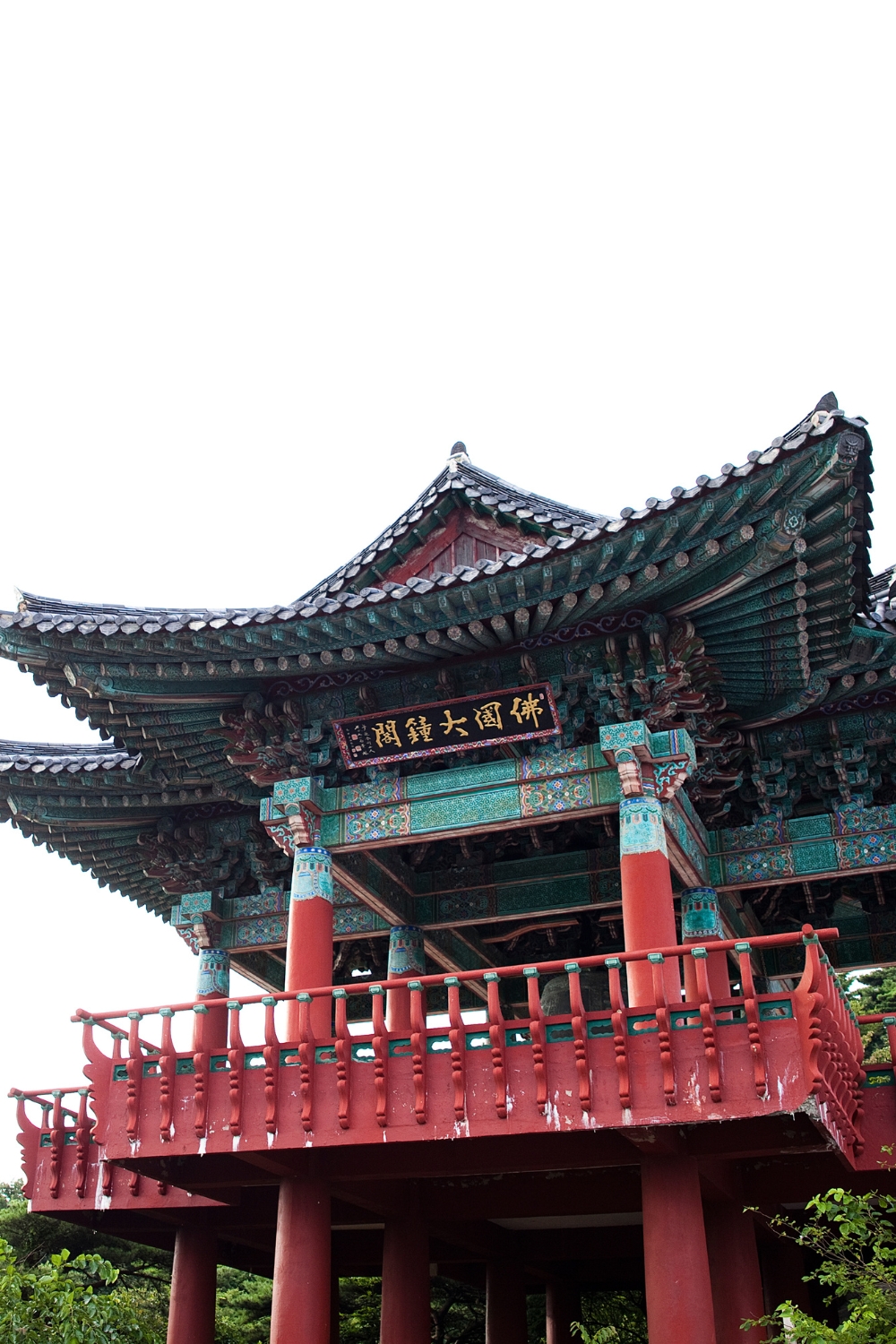
Perched on Mount Tohamsan, Seokguram Grotto houses one of Asia’s most magnificent Buddha statues and represents the pinnacle of Silla Dynasty stone carving artistry. This artificial cave temple, built in the 8th century, demonstrates remarkable engineering skills and deep spiritual devotion.
Architectural Engineering Marvel
The grotto’s construction required advanced understanding of mathematics, engineering, and geology. The artificial cave maintains perfect temperature and humidity levels year-round without modern climate control, protecting the stone carvings for over 1,200 years.
The main Buddha statue, carved from a single piece of granite, sits in serene meditation facing the East Sea. The statue’s proportions follow classical Buddhist artistic principles, while its facial expression conveys both compassion and wisdom that has moved countless visitors throughout the centuries.
Surrounding the main Buddha are intricate relief carvings of guardian deities, bodhisattvas, and protective spirits. Each figure demonstrates exceptional artistry and contributes to the grotto’s spiritual atmosphere.
Pilgrimage and Spiritual Journey
The hike to Seokguram takes about 30 minutes through beautiful mountain forest, creating a natural pilgrimage experience. The forest path prepares visitors spiritually for the encounter with the sacred Buddha statue.
The grotto’s location was carefully chosen to face the sunrise over the East Sea, symbolizing enlightenment and spiritual awakening. Ancient pilgrims would time their visits to witness the first light of dawn illuminating the Buddha’s face.
Hiking time: 30 minutes from Bulguksa Temple
Entry fee: 5,000 KRW for adults
Best for: Spiritual experience, photography, hiking
UNESCO designation: World Heritage Site
3. Tumuli Park – Royal Burial Ground
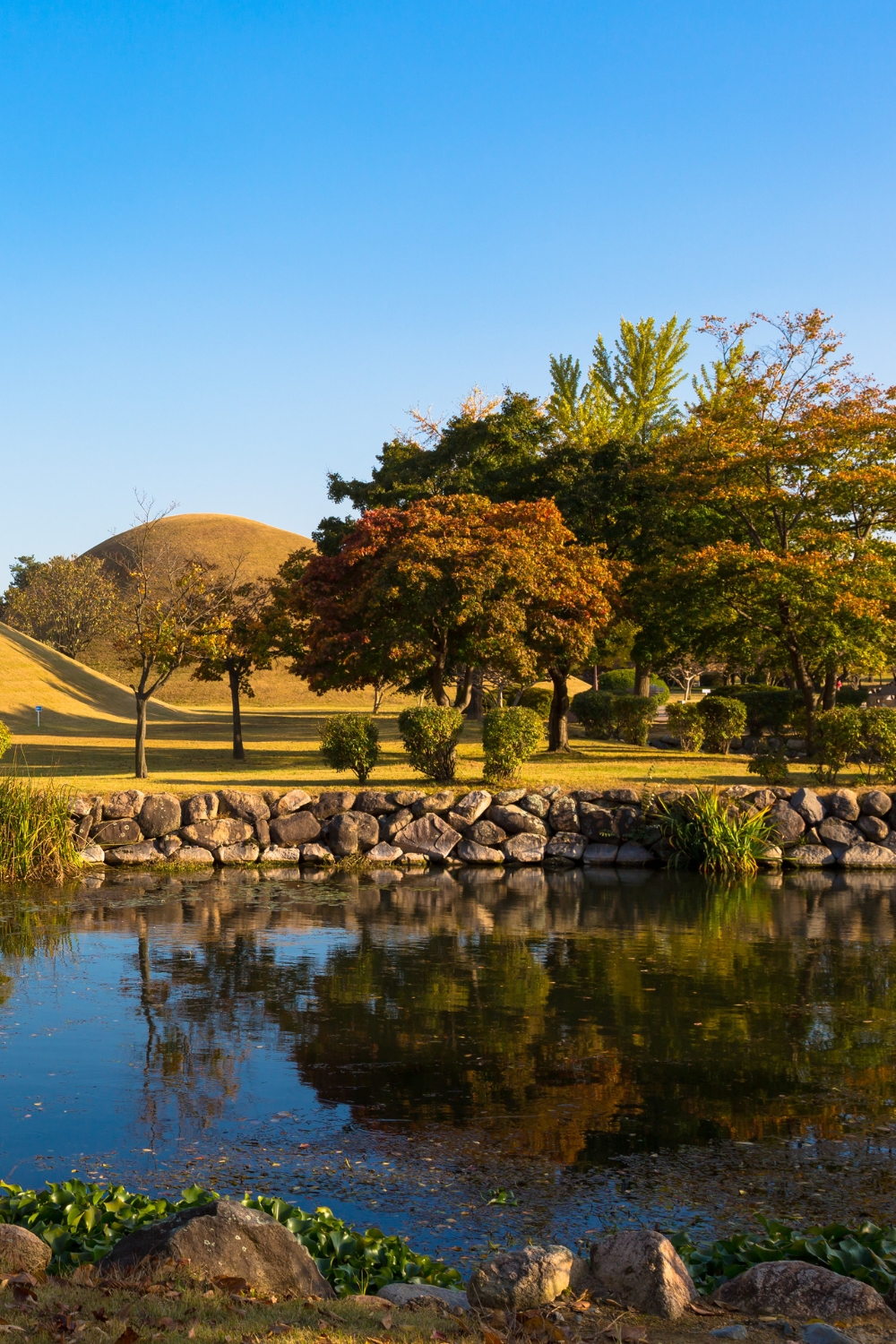
Tumuli Park offers visitors a unique opportunity to explore ancient Silla royal tombs while walking through one of Korea’s most distinctive archaeological landscapes. These grass-covered burial mounds, scattered throughout central Gyeongju, create an otherworldly atmosphere that distinguishes the city from any other destination.
Archaeological Wonders and Royal Heritage
The park contains 23 large burial mounds dating from the 5th and 6th centuries, when Silla was expanding its power throughout the Korean peninsula. These tombs held Silla royalty and nobility, along with thousands of precious artifacts that provide insight into ancient Korean culture.
The most famous tomb, Cheonmachong (Flying Horse Tomb), allows visitors to enter and observe the burial chamber’s construction techniques. The tomb’s name comes from a painting of a flying horse found on a birch bark saddle flap, representing one of Korea’s earliest examples of painting.
Artifacts discovered in these tombs include gold crowns, jewelry, weapons, and pottery that demonstrate the sophisticated artistry and international connections of the Silla Kingdom. Many of these treasures are displayed in nearby museums, creating a comprehensive understanding of Silla culture.
Peaceful Urban Oasis
The park serves as a green space in the heart of Gyeongju, where locals exercise, families picnic, and visitors can rest while contemplating the ancient history beneath their feet. The contrast between the peaceful park atmosphere and the profound historical significance creates a unique experience.
Walking paths wind between the burial mounds, each offering different perspectives on the ancient landscape. Information boards provide historical context and help visitors understand the significance of each tomb group.
Operating hours: 9 AM – 10 PM daily
Entry fee: 3,000 KRW for adults
Best for: History enthusiasts, photography, peaceful walks
Special feature: Enter an actual ancient tomb
4. Anapji Pond – Reflecting Ancient Glory
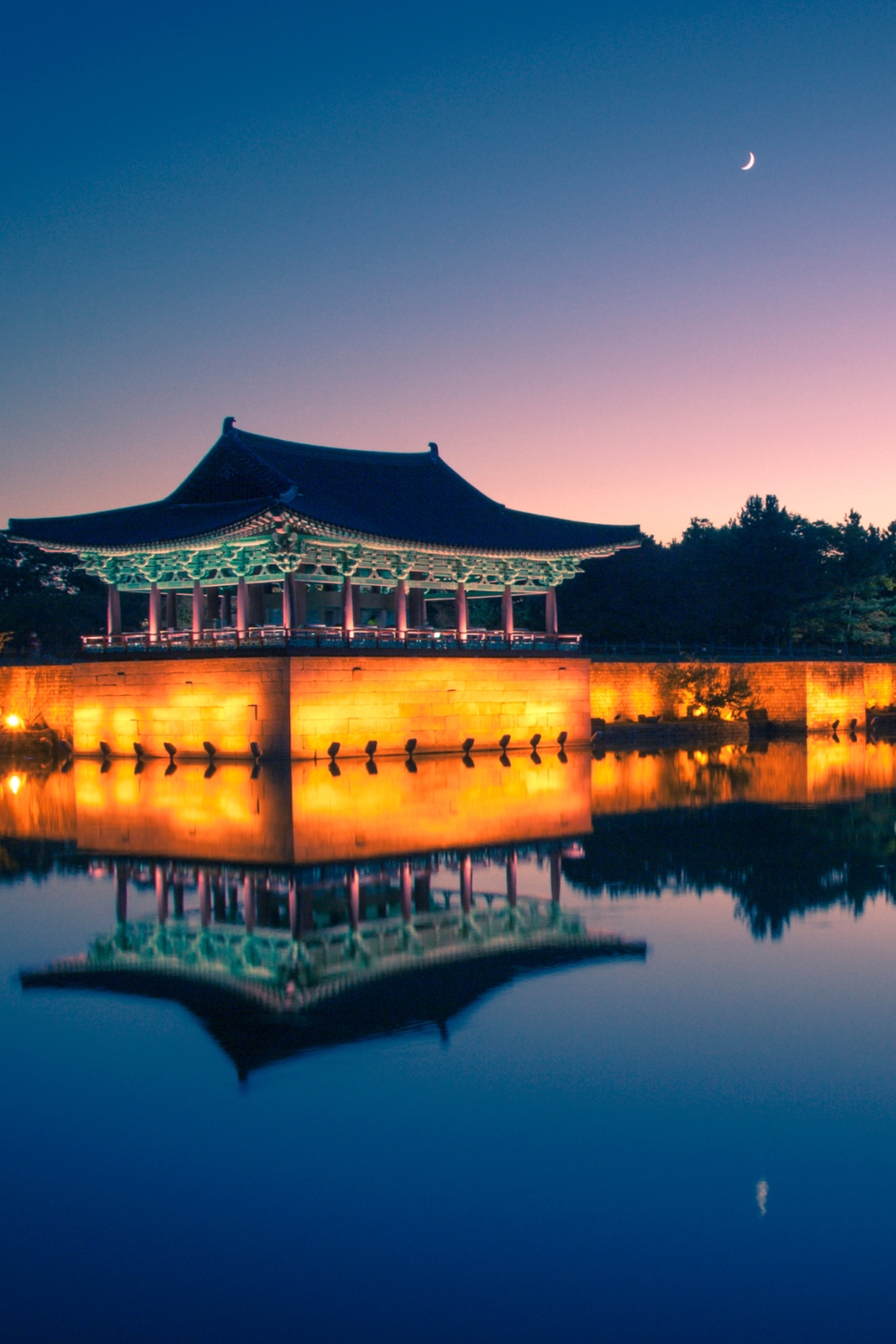
Anapji Pond, officially known as Wolji Pond, represents one of Korea’s most beautiful examples of ancient garden design and palace architecture. This artificial pond, created in 674 AD as part of the Silla royal palace complex, demonstrates the sophisticated landscape architecture of ancient Korea.
Palace Gardens and Royal Leisure
The pond was designed as a recreational area for Silla royalty, featuring artificial islands, pavilions, and carefully planned views that create different scenic compositions from every angle. The garden design incorporates principles of harmony between human-made and natural elements.
Archaeological excavations have revealed the foundations of multiple pavilions and buildings that once surrounded the pond. These structures served various functions, from royal banquets to poetry competitions, making the pond area a center of Silla court culture.
The pond’s design includes symbolic elements representing Buddhist and Confucian cosmology. The three islands represent the mythical mountains where immortals live, while the overall layout follows geomantic principles that were believed to bring good fortune.
Nighttime Illumination and Photography
Anapji Pond becomes truly magical after sunset, when carefully placed lighting illuminates the pavilions and creates perfect reflections on the water surface. The nighttime illumination transforms the site into one of Korea’s most photographed locations.
The reflection of the reconstructed pavilions in the still water creates symmetrical compositions that have inspired countless photographers and artists. Different seasons bring varying colors and atmospheric conditions that change the pond’s appearance throughout the year.
Best photography time: Blue hour after sunset
Illumination: Daily until 10 PM
Entry fee: 3,000 KRW for adults
Special feature: Perfect reflections and night photography
5. Cheomseongdae Observatory – Ancient Astronomy
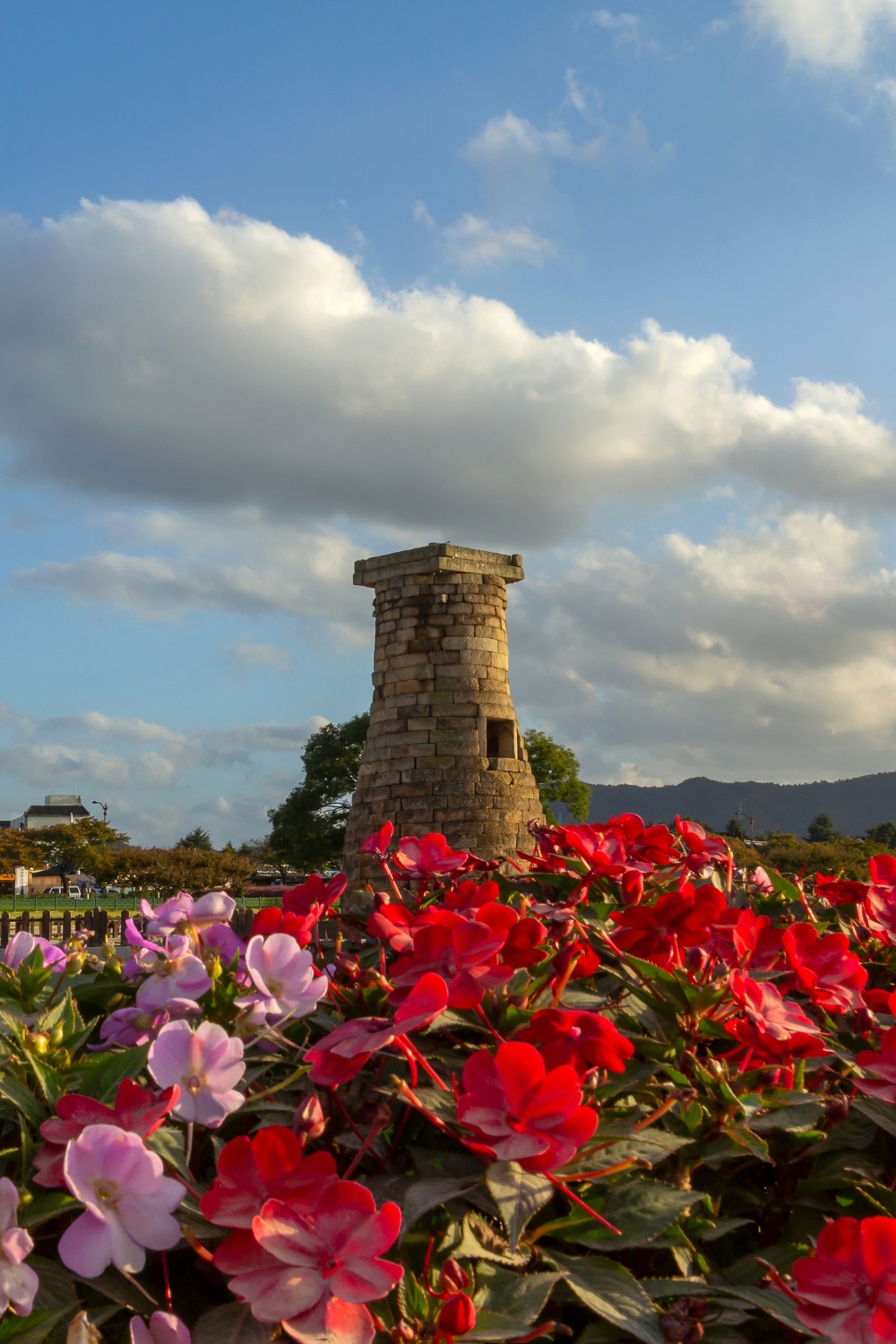
Cheomseongdae stands as the world’s oldest surviving astronomical observatory and demonstrates the advanced scientific knowledge of the Silla Kingdom. Built during the reign of Queen Seondeok (632-647 AD), this stone tower represents humanity’s eternal fascination with the cosmos.
Scientific Achievement and Royal Patronage
The observatory’s construction required sophisticated understanding of astronomy, mathematics, and engineering. The tower’s proportions and design incorporate various astronomical measurements, including the number of days in a year and the lunar calendar system used by Silla astronomers.
Queen Seondeok, one of history’s remarkable female rulers, patronized scientific advancement and education. The observatory represents her commitment to knowledge and the importance of astronomy in ancient Korean society for agricultural planning and royal ceremonies.
The tower’s unique bottle-shaped design serves both functional and aesthetic purposes. The narrow window opening aligns with specific celestial events, while the overall structure has withstood earthquakes and weather for over 1,300 years.
Astronomical Heritage and Modern Significance
Cheomseongdae predates famous European observatories by several centuries, highlighting Korea’s early contributions to astronomical science. The observatory demonstrates that ancient Korean civilization valued scientific observation and mathematical precision.
The surrounding area includes other Silla period ruins and provides context for understanding the observatory’s role in the ancient capital. Modern astronomical equipment nearby allows visitors to compare ancient and contemporary methods of studying the sky.
Built: 632-647 AD
Height: 9.17 meters
Historical significance: World’s oldest surviving observatory
Best for: History of science, photography, cultural understanding
6. Gyeongju National Museum – Treasure House of Silla
The Gyeongju National Museum houses the world’s most comprehensive collection of Silla Dynasty artifacts and provides essential context for understanding the archaeological sites throughout the city. This museum serves as both a repository of national treasures and an educational center for Korean ancient history.
Golden Treasures and Royal Artifacts
The museum’s crown jewel is the collection of Silla gold artifacts, including the famous gold crown from the Great Tomb at Hwangnamdaechong. These intricate golden ornaments demonstrate the sophisticated metalworking techniques and artistic sensibilities of Silla craftsmen.
The Divine Bell of King Seongdeok the Great, weighing 18.9 tons, represents one of Asia’s largest and most beautiful bronze bells. The bell’s pure tone and intricate decorative designs showcase the advanced bronze casting techniques of 8th-century Korea.
Pottery collections span the entire Silla period, showing the evolution of ceramic techniques and artistic styles. From simple earthenware to sophisticated glazed ceramics, these artifacts illustrate daily life and artistic development in ancient Korea.
Educational Experience and Cultural Context
Interactive exhibits and detailed explanations help visitors understand the historical significance of artifacts and their connections to the archaeological sites around Gyeongju. The museum provides crucial background information that enhances visits to temples, tombs, and other historic locations.
Special exhibitions regularly showcase recent archaeological discoveries and provide new insights into Silla culture. These rotating displays ensure that repeat visitors can always discover something new about Korea’s ancient heritage.
Operating hours: 9 AM – 6 PM (closed Mondays)
Entry fee: 2,000 KRW for adults
Special collections: Silla gold artifacts, Buddhist art
Best for: Understanding Korean history, rainy day activities
7. Yangdong Folk Village – Traditional Korean Life
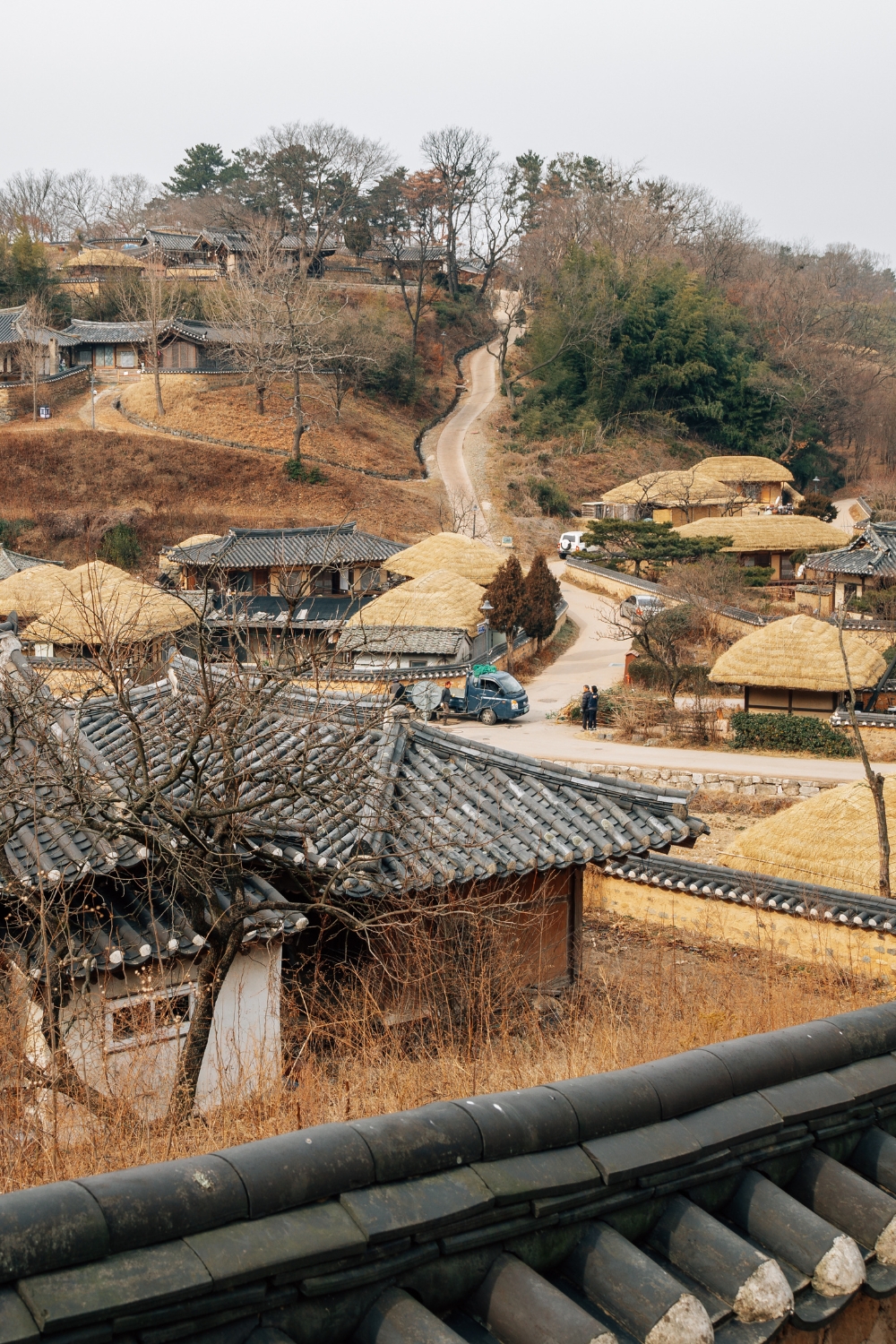
Yangdong Folk Village, a UNESCO World Heritage site, preserves traditional Korean architecture and lifestyle from the Joseon Dynasty period. This living village demonstrates how Korean aristocratic and common families lived for centuries and maintains many traditional practices today.
Traditional Architecture and Social Structure
The village layout reflects Confucian social hierarchy, with aristocratic houses positioned on higher ground and commoner dwellings in the valley. This spatial arrangement demonstrates the social organization that dominated Korean society for over 500 years.
Traditional hanok houses showcase different architectural styles based on social class and family wealth. The aristocratic houses feature sophisticated roof designs, courtyards, and decorative elements, while commoner houses emphasize functionality and simplicity.
Many buildings date from the 15th to 19th centuries and remain in excellent condition. The village’s preservation allows visitors to experience authentic traditional Korean architecture without modern reconstructions or tourist-oriented modifications.
Living Heritage and Cultural Immersion
Unlike museum villages, Yangdong remains a living community where families continue traditional occupations and customs. Visitors can observe traditional crafts, farming techniques, and daily activities that have been practiced for generations.
The village offers homestay experiences where visitors can sleep in traditional houses, participate in daily activities, and learn about Korean customs from local families. These immersive experiences provide deep cultural understanding impossible to achieve through sightseeing alone.
Distance from Gyeongju: 20 kilometers
UNESCO designation: World Heritage Site
Best for: Cultural immersion, traditional architecture
Special programs: Homestay experiences available
8. Bunhwangsa Temple – Historic Buddhist Heritage
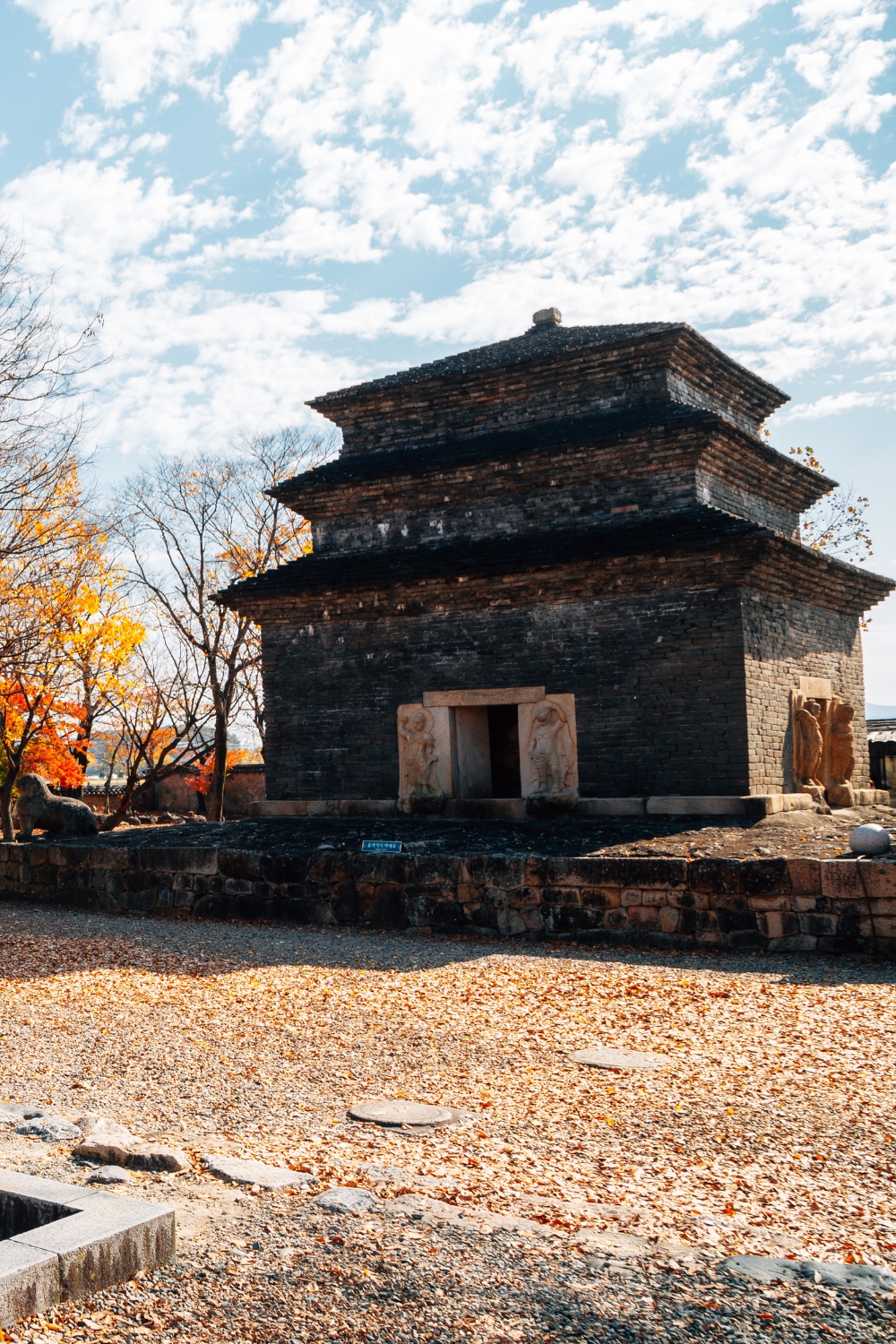
Bunhwangsa Temple, built in 634 AD, represents one of Korea’s oldest Buddhist temples and houses several important cultural treasures. While smaller than Bulguksa, this temple offers intimate experiences with Korean Buddhist culture and contains unique architectural features found nowhere else in Korea.
Unique Stone Pagoda and Architectural Features
The temple’s three-story stone pagoda, built from brick-like stones, represents a unique architectural style in Korean Buddhist art. This National Treasure demonstrates construction techniques that bridge the gap between wooden and stone pagoda traditions.
The temple’s modest size creates an intimate atmosphere perfect for quiet contemplation and meditation. Unlike larger temple complexes, Bunhwangsa allows visitors to experience Buddhist spirituality without crowds or commercial distractions.
Ancient stone lanterns, guardian statues, and carved decorations throughout the temple grounds showcase the artistic achievements of early Korean Buddhist art. Each element contributes to the temple’s spiritual atmosphere and historical significance.
Buddhist Culture and Spiritual Experience
Active Buddhist practice continues at Bunhwangsa, with monks maintaining daily prayer schedules and traditional rituals. Visitors can observe authentic Buddhist ceremonies and experience the spiritual atmosphere that has been maintained for over 1,400 years.
The temple offers meditation programs and cultural experiences that introduce visitors to Korean Buddhist philosophy and practice. These programs provide insights into the spiritual traditions that have shaped Korean culture for centuries.
Founded: 634 AD
Key treasure: Three-story stone pagoda
Best for: Buddhist culture, quiet contemplation
Special programs: Meditation experiences available
9. Namsan Mountain – Sacred Mountain of Temples
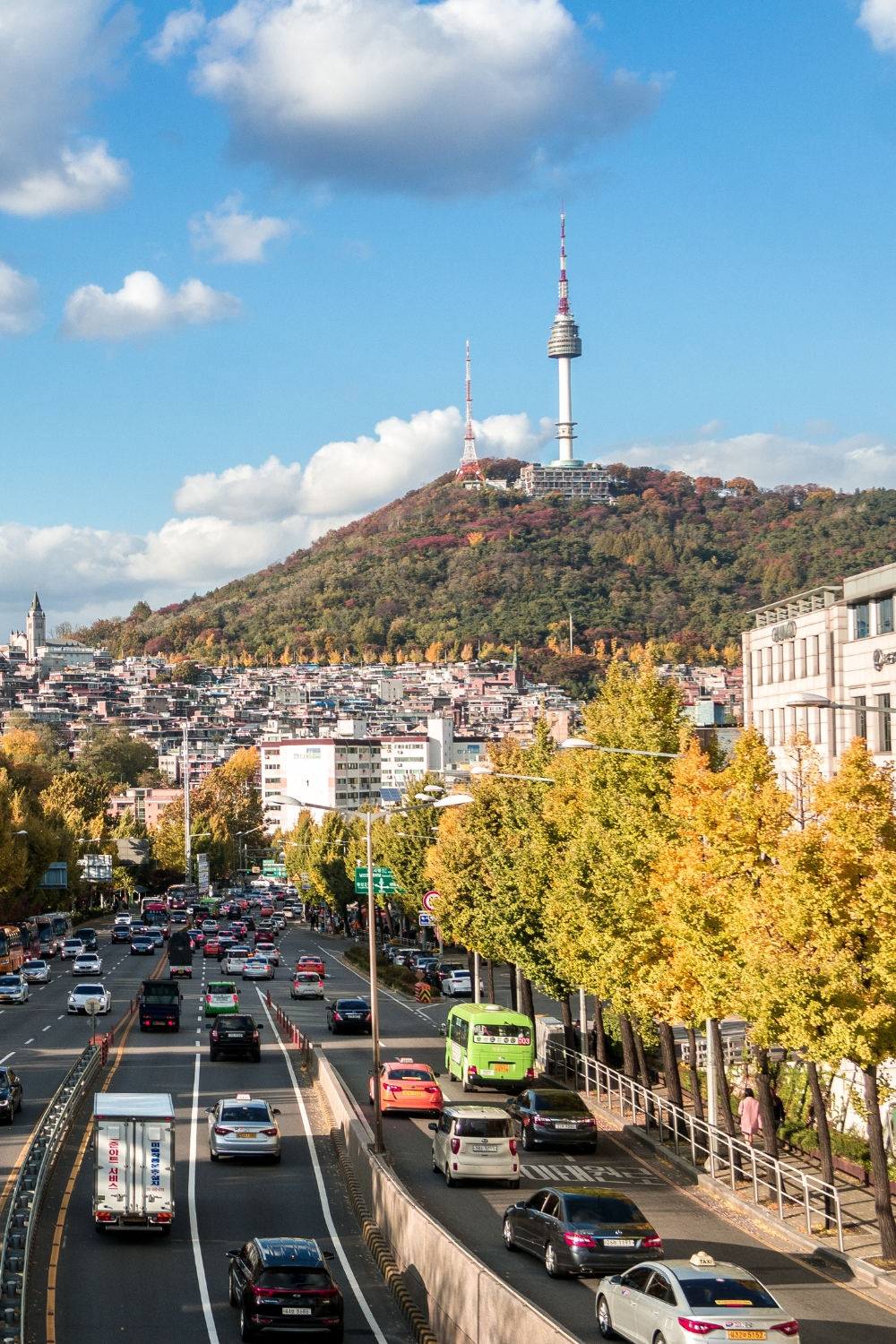
Namsan Mountain, rising south of Gyeongju city center, contains the highest concentration of Buddhist ruins in Korea and serves as an outdoor museum of Silla Buddhist art. This sacred mountain houses over 100 temple sites, 40 pagodas, and numerous Buddha statues carved into rock faces.
Archaeological Wonderland and Hiking Paradise
The mountain contains hiking trails that connect various temple ruins, Buddha statues, and archaeological sites. These trails offer different difficulty levels, from easy walks to challenging hikes that reward visitors with panoramic views of Gyeongju.
Stone Buddha statues carved directly into rock faces demonstrate the skill of Silla stone carvers and the mountain’s spiritual significance. These sculptures, some over 1,000 years old, remain remarkably well-preserved and continue to inspire visitors with their artistic beauty.
The variety of archaeological sites on Namsan provides comprehensive exposure to Silla Buddhist culture. From elaborate temple foundations to simple hermit caves, the mountain showcases the full spectrum of Buddhist religious practice in ancient Korea.
Natural Beauty and Spiritual Significance
The mountain’s natural beauty enhances its spiritual atmosphere, with seasonal changes creating different backdrops for the ancient ruins. Spring azaleas, summer greenery, autumn colors, and winter snow each provide unique experiences for visitors.
Many sites on Namsan offer spectacular views of Gyeongju city and the surrounding countryside. These viewpoints help visitors understand the geographical context of the ancient capital and appreciate the natural beauty that attracted Silla settlement.
Hiking difficulty: Easy to moderate
Key attractions: Rock-carved Buddha statues, temple ruins
Best seasons: Spring and autumn
Recommended time: Full day for comprehensive exploration
10. Gyeongju Historic Areas – Living Archaeological Park
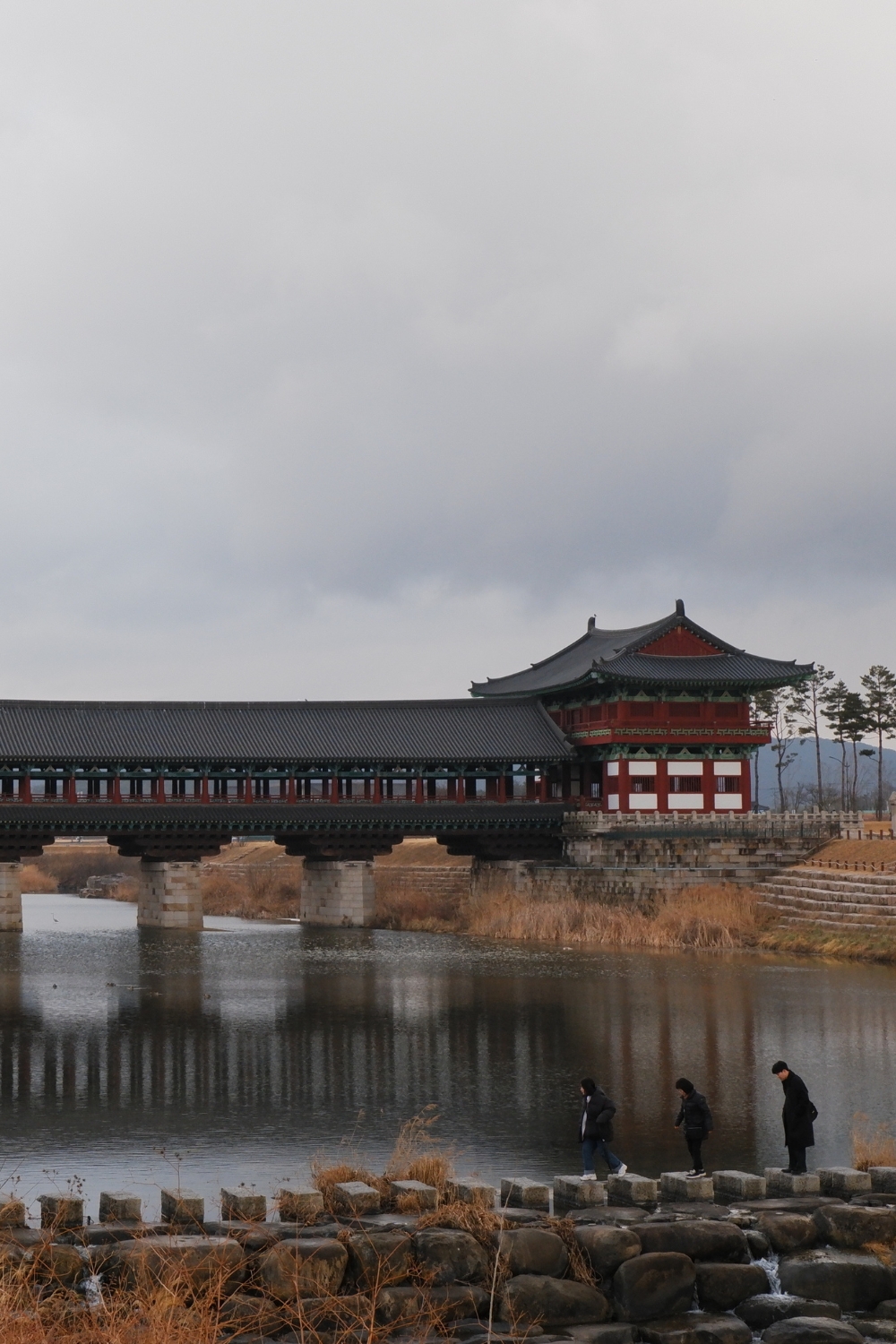
The Gyeongju Historic Areas encompass the entire city center and represent one of the world’s most remarkable concentrations of archaeological sites. This UNESCO World Heritage designation recognizes not just individual monuments but the entire landscape as a cultural treasure.
Integrated Historical Landscape
Unlike typical archaeological sites, Gyeongju’s historic areas integrate ancient ruins with modern urban life. Burial mounds serve as parks, temple sites coexist with residential neighborhoods, and archaeological discoveries regularly occur during construction projects.
The historic areas include five distinct zones: Mount Namsan, Wolseong District, Tumuli Park District, Hwangnyongsa District, and Sanseong District. Each zone represents different aspects of Silla culture and provides diverse experiences for visitors.
This integrated approach to heritage preservation allows visitors to experience how ancient and modern Korea coexist. The seamless blend of archaeological sites with contemporary life creates a unique urban environment found nowhere else in the world.
Cultural Heritage Management
The designation of the entire city center as a historic area reflects Korea’s commitment to preserving cultural heritage while maintaining a living community. Building regulations, archaeological protocols, and urban planning all prioritize heritage preservation.
Regular archaeological excavations continue to reveal new insights into Silla culture, making Gyeongju a dynamic archaeological site rather than a static museum. Recent discoveries include palace foundations, royal tombs, and everyday artifacts that enhance understanding of ancient Korean life.
UNESCO designation: World Heritage Site
Area covered: Central Gyeongju
Significance: Living archaeological landscape
Best for: Comprehensive historical understanding
Planning Your Gyeongju Adventure
Getting to and Around Gyeongju
Gyeongju is easily accessible from major Korean cities by KTX high-speed train or express bus. The train station connects to Seoul in 2 hours, while buses provide economical transportation from various destinations throughout Korea.
Within Gyeongju, bicycle rental offers the most enjoyable way to explore the city’s archaeological sites. Well-maintained bike paths connect major attractions, and the city’s compact size makes cycling practical for most visitors.
Public buses serve more distant attractions like Yangdong Folk Village and Namsan Mountain, while taxi services provide convenient transportation for travelers with limited time or mobility concerns.
Best Time to Visit
Spring (April-May): Cherry blossoms transform the city into a pink paradise, making this the most popular but crowded season. Temple grounds and burial mounds become particularly photogenic during bloom season.
Summer (June-August): Hot and humid weather makes early morning and evening visits most comfortable. Summer festivals and cultural events provide additional entertainment options.
Autumn (September-November): Perfect weather and stunning fall colors create ideal conditions for hiking and photography. This season offers the best combination of comfortable temperatures and natural beauty.
Winter (December-February): Fewer crowds and snow-covered landscapes provide peaceful experiences, though some outdoor activities may be limited by weather conditions.
Cultural Etiquette and Practical Tips
When visiting temples, dress modestly and remove shoes before entering buildings. Photography may be restricted in certain areas, particularly around sacred Buddha statues or during religious ceremonies.
Many sites offer English-language audio guides or smartphone apps that provide detailed historical information. These resources significantly enhance the educational value of visits to archaeological sites.
Gyeongju’s compact size allows visitors to experience multiple attractions in a single day, but the city’s rich history rewards longer stays that allow for deeper exploration and understanding.
Conclusion
Gyeongju offers an unparalleled journey through Korean history, where ancient treasures and living culture create experiences that resonate long after visits end. From the architectural masterpieces of Bulguksa Temple to the mysterious burial mounds of Tumuli Park, each destination reveals different facets of the remarkable Silla civilization.
What makes Gyeongju extraordinary is its ability to make history tangible and accessible. Walking through the city feels like traveling through time, where every street corner might reveal ancient foundations and every hill might contain royal tombs. The UNESCO World Heritage designation recognizes not just individual monuments but the entire landscape as a cultural treasure that belongs to all humanity.
The city’s greatest strength lies in its integration of preservation with contemporary life. Ancient sites coexist with modern communities, creating a living museum where Korean culture continues to evolve while honoring its roots. This balance makes Gyeongju both a window into the past and a testament to Korea’s commitment to cultural preservation.
These ten must-visit destinations represent the diversity of experiences available in Gyeongju, from spiritual contemplation at ancient temples to scientific wonder at the world’s oldest observatory. Each location contributes to a comprehensive understanding of Korean civilization and the remarkable achievements of the Silla Kingdom.
Whether you’re drawn by archaeological wonders, spiritual experiences, cultural immersion, or natural beauty, Gyeongju delivers encounters with Korean heritage that will deepen your appreciation for this remarkable culture. The city serves as both an introduction to Korean history and a profound exploration of human creativity and spiritual achievement.
Plan your Gyeongju adventure today and prepare to discover why this ancient capital continues to inspire visitors from around the world. The treasures of Silla await, ready to share their stories and transform your understanding of Korean culture and history.
